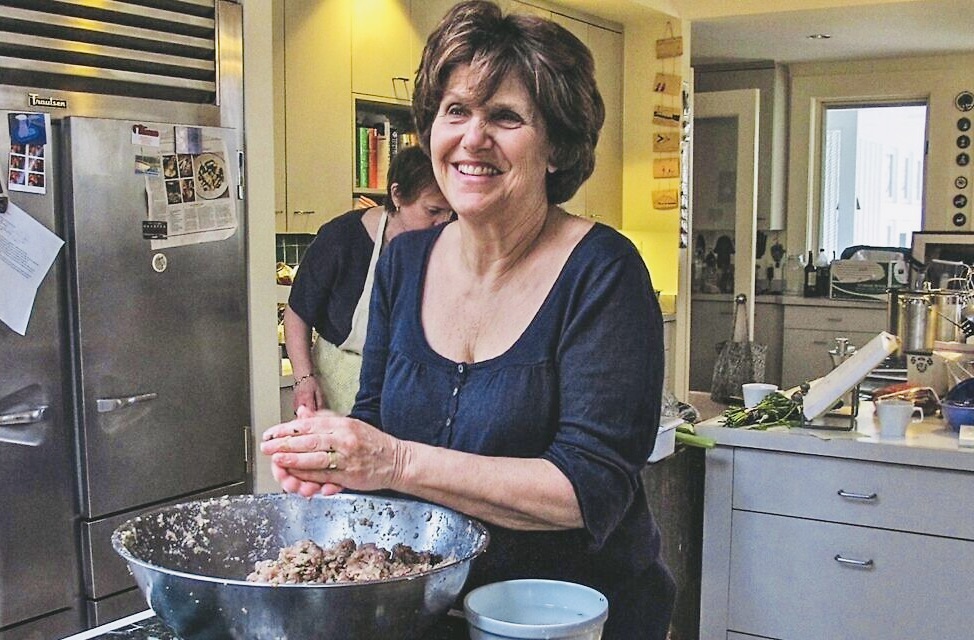The distinguished American food writer Joan Nathan began writing her latest book, My Life In Recipes: Food, Family And Memories (Alfred A. Knopf), at a sad but portentous time. Her husband of 42 years, Allan Gerson, had just died, and she had reached the golden age of 80.
In this, her twelfth book, she covers a great deal of ground. She looks back at her childhood in Providence, Rhode Island, and in Larchmont, New York. She recalls her student days at the University of Michigan and in Paris. She remembers jobs in New York City and Jerusalem. She recaps her career as a freelance journalist and world traveller. And most of all, she introduces a reader to wonderful multinational recipes with a distinct Jewish flavor.
It’s an eminently enjoyable and elucidating journey that cements her well-deserved reputation as a culinary maven. “This book is my attempt to show how a meaningful life can be led through pursuing, tasting, testing and sharing recipes,” she writes.
As she observes in the first paragraph, she hails from “a family of eaters.” Her paternal and maternal grandparents were German and Polish Jews respectively. Her father, Ernest, immigrated to the United States in 1929 at the age of 24. Her mother, Pearl Gluck, was born in the United States.
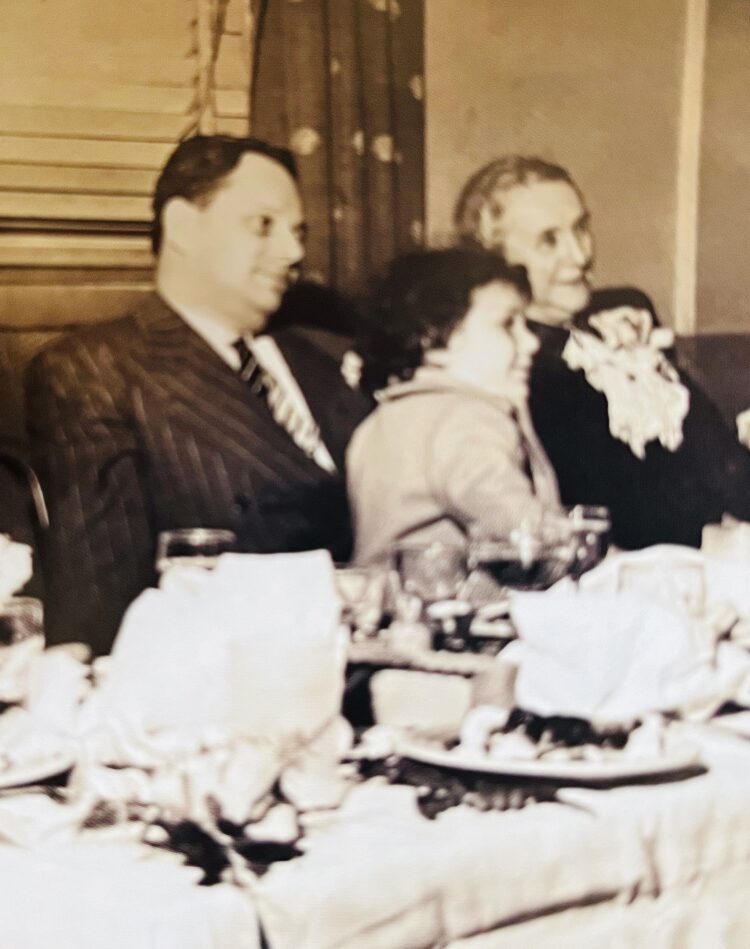
Looking back at her youth, she remembers the times when Ernest, a businessman, would recount his pleasure in eating German Jewish foods such as berches (a potato-based savory challah), sweet-and-sour carp, roast goose or sauerbraten, and apple cake.
Pearl, a former department store salesperson, did not cook much, but her beef stew was marvellous. “I remember its whiff so distinctly,” she says.
The person who unintentionally taught her to cook was her family’s Southern African American housekeeper and cook, Susie Marbry. It was she who whipped up their Sabbath meal of chicken soup with matzo balls, roast chicken seasoned with paprika and garlic salt, rice, vegetables and a pie or cake.
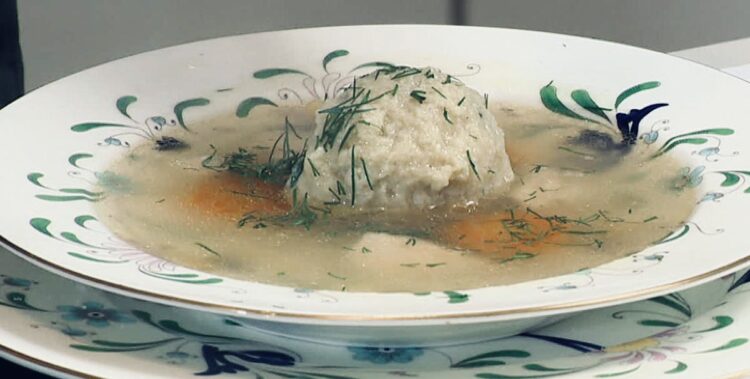
Nathan’s first trip abroad, to the French city of Grenoble when she was 17, awakened her gastronomic senses. This was where she tasted zucchini for the first time and learned new ways of cooking eggplant. From that moment onward, she was hooked on French cuisine. “As far as I was concerned, French food only got better and better.”
Travelling to Paris, she ventured into the Marais, the old Jewish district, where she would nibble on an aromatic baguette, bite into an East European-style pletzl, one of her favorite breads, and consume the kind of plain, thick yogurt that came in glass bottles.
When she wrote her MA thesis on French literature, an exploration of the novels of Marcel Proust, she discovered that madeleines dunked in tea could awaken memories.
Having finished her studies, she found a position as an English-French translator at the United Nations mission of the Republic of Madagascar. One day, its ambassador invited Nathan to a reception in his penthouse apartment, and much to her astonishment, the Malaysian-Indonesian-African spread that appeared before her looked superb. The most impressive dish was a “salade,” consisting of a curried melange of cauliflower, string beans, carrots and cabbage. In her view, it was far tastier than Middle Eastern pickled vegetables or dill pickles.
In the summer of 1969, she visited Israel and was immediately taken by its “wildness and frontier feeling.” She liked the Israeli breakfasts and loved its Middle Eastern foods, particularly the felafel and hummus, the subtle flavorings of Moroccan dishes and Armenian specialities such as stuffed grape leaves.
Thanks to the influence of an Israeli journalist, the mayor of Jerusalem, Teddy Kollek, hired her as a foreign press attache. Following her departure from Israel, she wrote her first book, The Flavor of Jerusalem.
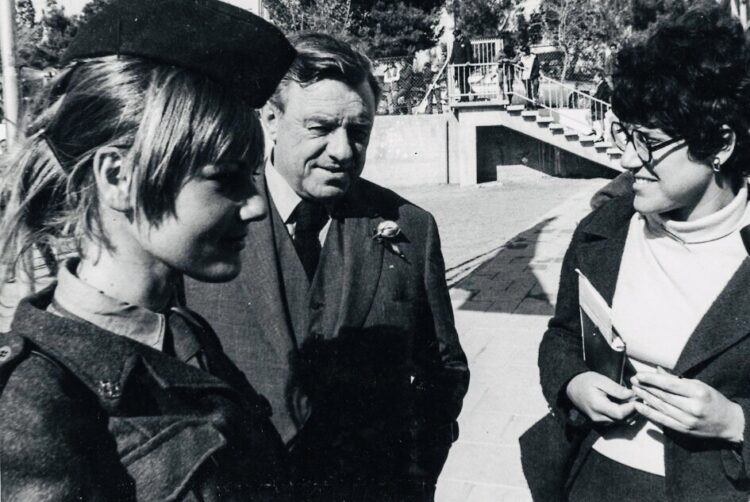
Although she was raised in an Ashkenazic home, she was remarkably ignorant of East European Jewish food, as she admits indirectly in one passage. Her husband’s mother, a Polish Jew, introduced her to homemade gefilte fish and kreplach.
She was especially fond of challah, which she tries to bake once a week. Not surprisingly, a photograph of a freshly-baked challah graces the cover of this volume.
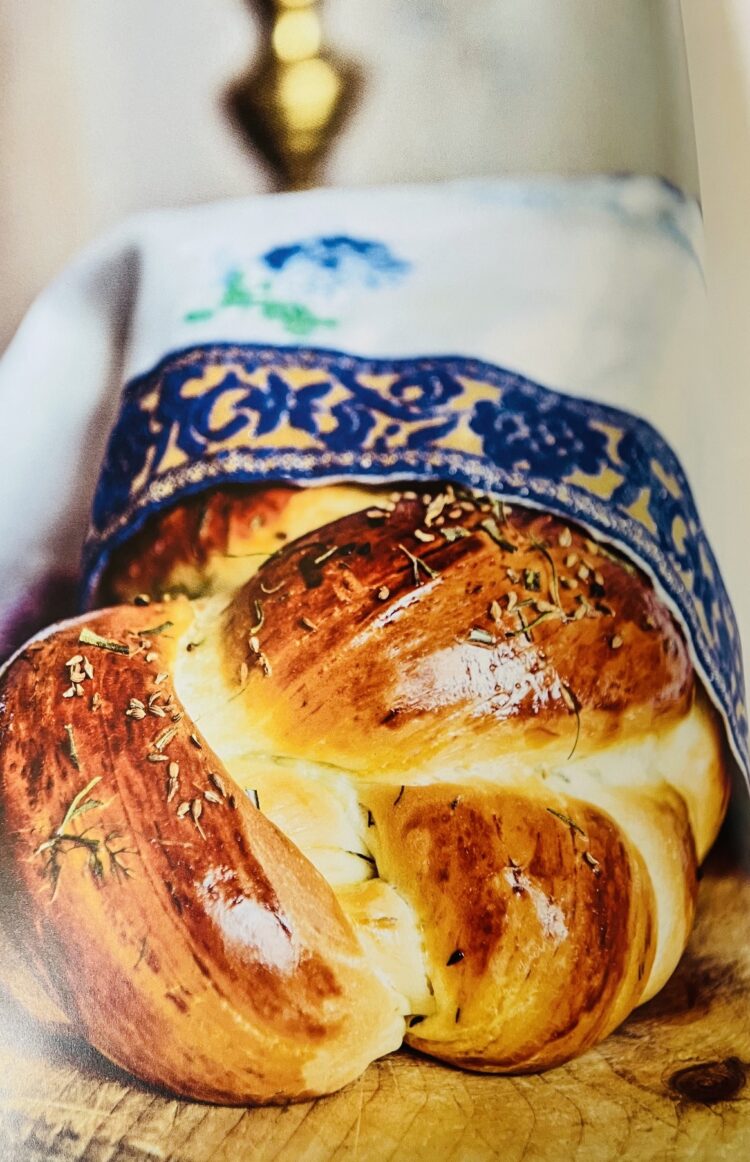
Nathan expanded her horizons by freelancing for The Boston Globe, The Washington Post, The New York Times and Gourmet magazine. These gigs were probably instrumental in enlarged the readership of her books, which range from The Jewish Holiday Kitchen and Jewish Cooking in America to The Foods of Israel Today and King Solomon’s Table.
A constant traveller, she has visited an eclectic variety of countries.
Moroccan food in Israel kindled her interest in Morocco, and she describes its cuisine rapturously. She rhapsodizes, in particular, over b’stillla, a pie stuffed with chicken, nuts and egg custard and sprinkled with exotic spices. She and her husband, a lawyer, befriended Morocco’s ambassador to the United States and his wife and they broke bread together in their homes.
Toward the end of its communist era, she visited the Soviet Union. The food was generally “dismal,” but in Moscow she dropped into a kosher Jewish cafe, the only one in the country, and ordered an apparently decent meal of chopped herring, calves’ foot jelly and cabbage soup.
In Cuba, a Soviet satellite in the Caribbean where her mother’s sister had lived until 1958, she was swept up by the aroma of rice and beans and drawn to a breakfast of fresh tropical fruits (papaya, guava and pineapples), Gouda cheese, jam, butter and toast.
Visiting Vietnam, she feasted on a beef pho soup garnished with mint, cilantro, lettuce and mango. She ended her repast with a tapioca-like dessert topped with caramel and ginger.
Nathan’s rendition of a sabbath dinner in Istanbul with a Jewish family originally from Edirne draws you into the intricacies of Turkish food.
“The meal started with … appetizers of eggplant-filled pastries called borek and kashkaval cheese, as well as taramasalata made from sunflower oil, lemon, bread and cured roe of mullet, cod or carp … There were Turkish dolmas, grape leaves stuffed with rice, currants, pine nuts, dill, and onion with a slightly lemony flavor … The main course featured a feast of Sephardic dishes: kashkarikas (zucchini peels simmered in tomato sauce); engendera (brains in tomato sauce with parsley); almodrote (roasted eggplant pulp with cheese), sea bass with lemony mayonnaise; artichoke bottoms … and leek-and-meat patties. Dessert included a sweet couscous with semolina, cinnamon, lemon zest and almonds, all bathed in a sugar sauce … as well as candied pumpkin with clotted cream.”
On their 45th anniversary, she and her husband toured Italy, and in a villa in Tuscany, they feasted on a memorable meal starting with fried zucchini blossoms, eggplants and potatoes with truffles and onions, followed by a bread-and-vegetable soup and pasta.
One of the last visitors she invited to her home before her husband’s death was Jose Andre, the founder of World Central Kitchen, which has distributed millions of meals during the Israel-Hamas war in the Gaza Strip. He prepared dafina, a rich Sephardic soup, for them. “He wanted me to experience what it was like before the Inquisition in Spain, when Jews cooked this delicious but humble dish every single sabbath.”
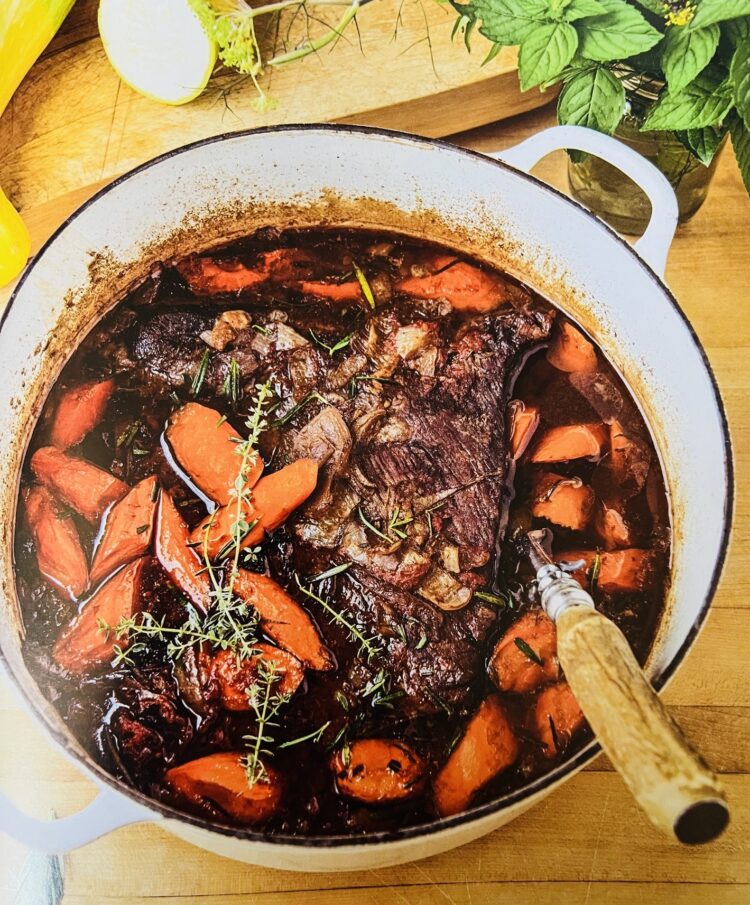
Nathan, in this alluring volume, expounds on her favorite meals, dishes and culinary experiences. To top it all off, she lists more than 100 tantalizing recipes, from Moroccan chicken with almonds and chestnuts, cinnamon and couscous to salmon baked with preserved lemons and za’atar.
To Nathan, food is a language of love, as it should be. And in this visually attractive volume graced by sharply-rendered color photographs, she proves her point beyond any doubt.

